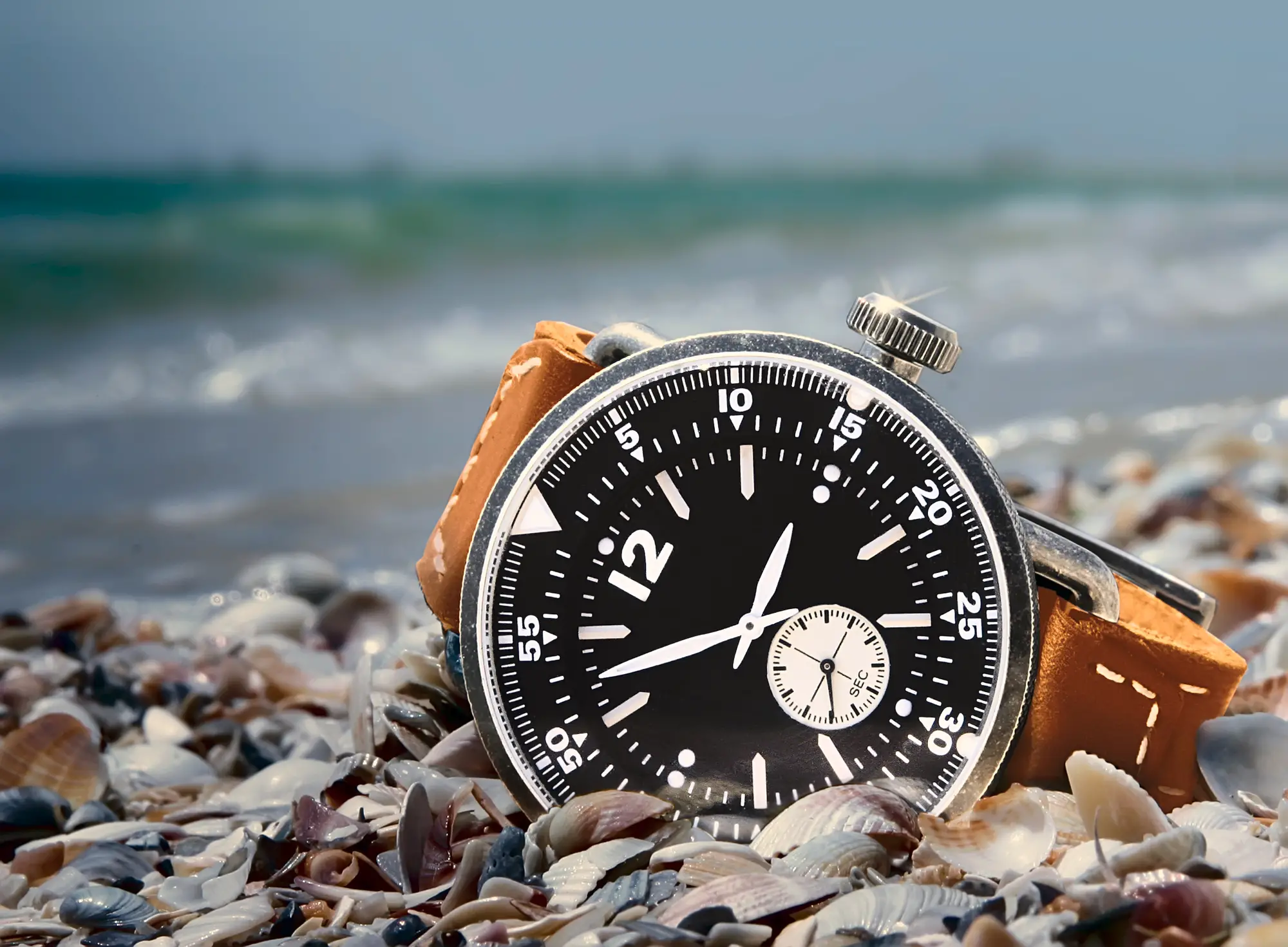7 Steps to Start a Watch Business (1st $1,000 in Sales)

The watch market has grown immensely in recent years, with experts forecasting the market size to increase by $19.28 billion by 2026.
There’s never been a better time to start a watch business. So, the main key to success will be sourcing quality products that your target market will be satisfied with.
- Identify a Niche Audience
- Find a Niche Product
- Define Sales Channels
- Identify the Minimum Budget
- Form a Legal Entity
- Set Up the Shop
- Reach First $1,000 in Sales
How to Start a Watch Business?
1. Identify a Niche Audience
From the start, you need to identify your niche audience, which is the unique group of people or demographic that you want to sell watches to.
It’s essential you start with this step because it will help guide the rest of the business decisions you’ll make when you start selling watches for a living.
The more niche and narrow you go, the better. This will allow you to better understand and target the needs of your customers rather than selling to a wide audience.
For instance, “moms” and “teenage boys” are not narrow enough groups to be a niche audience.
Here are some examples of niche audiences:
Example niche audience: Millenial women who use organic cosmetics as a means of relaxation and are Instagram influencers.
Example niche audience: Health-conscious small dog owners whose dogs are picky eaters.
1.1 Analyze Watch Niche Communities
You should then find a handful of niche watch communities online to learn from them and see what their real-world problems and ideas are for watch sellers.
With this, you can get a better idea of the actual types of people who buy and use watches. Again, the more specific you get, the better.
This is the most important step to opening a watches shop. It will help you perform research on your niche audience and help you form your watch business around these actual needs in the marketplace.
Here are some examples of watch niche communities:
- https://www.facebook.com/groups/694637850668639/?mibextid=HsNCOg
- https://www.facebook.com/groups/watches1910/?mibextid=HsNCOg
- https://www.facebook.com/groups/WatchesTheCollectionOfTime/
- https://www.facebook.com/groups/microbrandwatches/
- https://www.facebook.com/ProperlyWound/
- https://www.reddit.com/r/Watches/
- https://www.reddit.com/r/VintageWatches/
1.2 Find a Problem or a Market Gap
After you’ve visited these niche watch communities online you’ll be able to identify market gaps or problems that these members have communicated.
Look for consistent comments or concerns they voice about where the current market is lacking or what existing watch sellers could do better. Keep an eye out for comments like ‘I hate when…’ or ‘How can I…”, which can be helpful to take note of.
This will give you ideas for how you could better serve your niche audience with your own watch brand. Make sure you’re focusing on specific and practical problems that you could actually address. Here are some examples of the market gaps and problems in the current watch market:
Potential Market Gap: the current watch market doesn’t have enough quality watches for pre-teens interested in timepieces
Potential Problem: the watch market doesn’t do a good enough job of using recycled materials
Potential Market Gap: there is a lack of waterproof watches that look high-quality and not like technical gear
Potential Problem: the luxury watch market is confusing to navigate for beginners in the space
1.3 Formulate the Niche Audience
Now you can combine what you’ve learned so far about the watch market, the problems consumers face with existing watch brands, and what watch sellers could do to better serve the market.
Consider the existing solutions out there or the lack thereof. Ensure the market problem is big enough to create a worthwhile opportunity as you open a watch shop. In doing so, you’ll have a good idea of who your target audience is, given the market gap or problem you want to address with your watch’s business.
Here are some examples of niche audiences and the problems in the existing watch market that they face:
- Pre-teens interested in timepieces + the current watch market doesn’t have enough quality watches for pre-teens interested in timepieces
- Eco-conscious consumers who like buying sustainable accessories + the watch market doesn’t do a good enough job of using recycled materials.
- Outdoorsmen who are interested in timepieces + there is a lack of waterproof watches that look high-quality and not like technical gear
- Newcomers to the luxury watch space + the luxury watch market is confusing to navigate to beginners in the space
2. Find a Niche Product
Now that you’ve identified your niche audience and the problem that you’ll solve with your watch business, you need to select the actual products you’ll sell that will accomplish this.
Think of the exact problems or market gaps that you’re addressing as a watch dealer, and come up with specific solutions that would solve these issues. For instance, if your niche audience is eco-conscious consumers who like sustainable accessories, you may want to offer a watch that is made from sustainable or recycled materials.
Here are some examples of niche audiences and the well-known products available that meet their needs:
Example niche product: people who enjoy the taste of coffee but don’t want a caffeine boost + decaffeinated coffee
Example niche product: people who like the convenience of using their favorite products all the time but travel a lot + travel-sized toiletries
Example niche product: consumers who live in cold weather regions and have long commutes + heated steering wheels
2.1 Analyze the Competitors
If you recognize there’s a lot of competition selling watches to your niche audience, take it as a good sign. Rather than be discouraged, this can actually mean that there’s money to be made in the market.
You can even learn from your competitors. Start by doing a Google search for your niche to identify your main competition. Analyze their sites to see what they’re doing and what’s working for them.
This can give you ideas for how you could improve offerings with your own watches small business to better serve customers.
If you want to sell watches that are sustainably sourced, here is some of your main competition:
2.2 Unique Selling Proposition
Your unique selling proposition, USP, is the aspect of your small watch businesses that you do better than everyone else in the market. Essentially, it’s a definitive reason why customers should choose to buy your watches over the competition.
This is an important step to take care of because it gives consumers a way to compare products from different sellers without having the watches in front of them. So, you’ll really want to highlight what makes your brand unique and special.
Here are the USPs of the competitors we identified above:
- Holzkern: “Naturally unique designs”
- Original Grain: “More than a Timepiece. A Piece of Time.”
- TRIWA: “Time for Oceans”
2.3 Choose a Product
Now it’s time to choose the products you’ll sell in your watch online store, combining all the research you’ve done thus far.
Keeping in mind who your audience is, what their problems are in the market, and how existing sellers have failed to meet their needs, you can identify the right products that will better serve the market.
Here are some examples of products that meet watch niche audience needs:
- Pre-teens interested in timepieces + the current watch market doesn’t have enough quality watches for pre-teens interested in timepieces +
- Eco-conscious consumers who like buying sustainable accessories + the watch market doesn’t do a good enough job of using recycled materials + watches made out of recycled materials
2.4 Find Suppliers
From the very beginning, you need to find the right suppliers that will provide you with quality products at reasonable prices. This has implications for how satisfied your customers are with their purchases and the profitability of your business.
Thus, as you’re looking to source watches to sell, you should consider wholesalers and manufacturers, online marketplaces, in-person markets, and others.
Do your research into each of your prospective suppliers by requesting samples, getting references from past customers, and finding out other details, like what their minimum order quantity is, to find the right match for your business.
Here are some resources to reference as you’re doing research on watch suppliers:
- https://www.mecanowatch.net/?gclid=CjwKCAiAvK2bBhB8EiwAZUbP1MthGUI3gNXUKfGqXzs9_fOx1PTGUTHz0eYoJYLK-xgkw_QevowXCRoChg0QAvD_BwE
- https://www.quora.com/Where-can-I-find-watch-manufacturers
- https://www.faire.com/category/Jewelry/subcategory/Watches?filters=maker_value%3Amade_in_usa%2Csorting%3Afeatured
- https://ecomelites.com/best-wholesale-watch-suppliers/
- https://medium.com/@blscmgroup/watch-manufacturer-list-a-guide-to-watch-brand-owners-and-wholesalers-5107f38c44e7
3. Define Sales Channels
When starting a watch business you’ll also need to think through how you will actually bring in sales for your store to have a successful launch.
There are many sales channels out there, but each situation is different. All sellers have different professional backgrounds and connections that could help them to market their watch shop online.
So, think through the resources you have available to you to help you sell your watch brand. You may have connections to resources or people who understand sales well and can help you out, or you may be able to do so yourself.
In the beginning, you may even want to focus on free sales channels like over your social media pages or to friends and family.
Here are some examples of potential sales channels:
- Your personal: Facebook friends, Instagram followers, colleagues, schoolmates
- Paid advertising: Google ads, Facebook ads, Tiktok ads, Twitter ads, Pinterest ads
- Marketplaces: Amazon, Etsy, eBay
- Communities: Facebook groups, Reddit, Quora, forums
- Other: Blogging, Craigslist, promoting in the real world (e.g. schools, workplaces, malls)
Related: How to Start a Crystal Business?
4. Identify the Minimum Budget
Many people have the idea that you need a lot of money to get into watches. However, this is generally not the case. If that were so, almost nobody would be able to start selling watches!
Instead of thinking big picture and how much money you’ll need to fund your watch business over the long run, focus on how much you need to reach your first $1,000 in sales.
Once your business starts making money, lenders will be more likely to fund your business when it has a successful track record.
Let’s assume it costs you $45 per unit to source watches to sell, and you’re selling them each for $75. You’ll have to sell 14 watches to hit this sales number, which would cost you $630 to source initially, plus any other shipping or marketing costs.
4.1 FFF and Personal Money
One way you can fund your watch business online is to utilize your own personal money, or FFF money, referring to friends, family, and naive people.
This is a good option for people just starting to sell watches, as many traditional forms of business financing will require some length of business history or proven track record before making the loan.
So if you can’t bootstrap your business on your own, you may turn to friends and family to make an investment in your watch store. Be sure to make the terms of the funding clear, like when they will be repaid and at what interest rate to avoid future conflicts.
4.2 Bank Loans
Bank loans are a traditional form of business financing. Borrowers receive a lump sum of cash to fund their business, then make monthly payments until the balance is fully repaid.
Banks are generally risk averse, meaning they only like to lend money when they have confidence that they will be repaid. Thus, bank loans are generally not a viable financing option for newer watch stores that are just getting started.
If you do want to apply for a bank loan, you will likely need to provide your past financial statements, loan proposal, business plan, and other documentation for consideration. Once they have approved you for the loan, you can receive the funds.
4.3 SBA Guaranteed Loans
Similarly, SBA-guaranteed loans are bank loans that are backed by the Small Business Association (SBA).
It is typically easier for small businesses to get an SBA loan because if the business fails or defaults on the loan, the SBA will pay back the funds to the bank.
The SBA has certain qualifications for who can receive these types of loans, including small, for-profit businesses that operate in the United States, among other criteria.
You will need to find a bank that will make SBA-guaranteed loans, fill out the application, and receive the funds upon approval.
4.4 Government Grants
Another option to fund your business is through government grants, though this is typically not a reliable source for most online sellers.
The availability and qualifications for government grants can vary greatly, though it is a free form of funding that doesn’t need to be repaid.
Most of the time, government grants are provided to fulfill an economic policy, which puts restrictions on recipients. For instance, they may need to hire a certain group of people or operate in a certain region to continue receiving the funding.
Even still, it doesn’t hurt to apply when you find a grant you could qualify for given that it’s free capital.
4.5 Crowdfunding
Some sellers will utilize crowdfunding to finance their business as they start to sell watches online.
This form of funding has largely grown in popularity in recent years with the rise of sites like Indiegogo and Kickstarter.
With this, businesses generally amass small amounts of capital from a large number of public investors who are interested in their business venture.
Even still, there tends to be a lot of competition on these sites, so this might be a better option for watch brands that have already generated some public interest or can invest in marketing spending to have a successful crowdfunding campaign.
It’s easy to get started on these platforms by making an account, and you can access the funds once you close the campaign.
5. Form a Legal Entity
You need to make your business legal from the start in order to stay in compliance with the law and be able to open up a bank account, hire employees, pay your taxes, and more.
Plus, registering your business entity is an exciting step that makes your watch business official! So even though this step can be intimidating, there is a lot to celebrate at this point.
In most cases, online sellers will form an LLC to receive the most personal protection, though there are a number of other business structures to choose from.
5.1 Business Name
An important step is to brainstorm watch business names before you can register your store. Many people will get caught up in this step, thinking of the perfect watch shop names, but you should try not to overthink it too much.
If you change your mind later on, you can also rename your business. Even still, you should come up with a name that is short and easy to remember, as this tends to help a business perform better. Anything too long or complicated can be distracting and turn customers away.
You can try to incorporate your product, USP, or niche audience into the name somehow, which could help customers remember it better.
5.2 Choose a Business Structure
There are a few options for business structures that you can choose from, though LLC tends to be the best for online sellers since it provides the best risk protection to store owners.
Let’s take a look at the main options:
- Sole proprietorship: there is no separation between the owner and the business; all profits are passed on to the owner, but they also must pay all losses and liabilities
- Partnership: similar to a sole proprietorship, but split between two or more people
- LLC: the business owner and business are separate entities; the owner doesn’t have to pay the business’s liabilities or losses
- S Corp: not a legal business structure but a tax classification; all business profits are passed through to shareholders
5.3 Register for Taxes (EIN)
You have to register your business for an EIN, and employer identification number, so you can pay your taxes, hire employees, and open up a business bank account. However, if you operate as a sole proprietor, this can be your SSN.
This is simple to do for free through the IRS website, though you can also register by mail. At this time, you will also determine what your tax year is, which is when you will pay your tax liabilities for the year. This can either be the calendar year or any other twelve-month period.
5.4 Bank Account & Credit Card
Once you have an EIN you can open up a business bank account for your store. This will allow you to make purchases, pay employees, and, most importantly–keep your business finances separate from your personal finances.
This is very helpful when it comes time to pay your taxes, as you will have your business’s finances well organized and clear from your bank statements.
Most banks have some offers for business accounts, so shop around to find the best offers for new customers and apply. At this time, you can also see what their credit card options are, which will allow you to make purchases.
5.5 Insurance & Accounting
Getting business insurance to sell watches online may not be your first thought, though it can be very worthwhile for business owners. Should anything adverse occur from your products, you can get personal protection from a business owner’s policy to keep your personal assets protected.
If you hire employees, you may want to secure a worker’s compensation policy as well. There are many other insurance policies out there for business owners, and while they are not required by law, they are generally a good investment.
You also may want to hire an accountant or bookkeeper to keep your finances in line and ensure you’re covering all liabilities and staying compliant with tax law. At the very least, consider bookkeeping software that you can manage on your own.
5.6 Permits & Licenses
Getting the right permits and licenses from the start is important, as this will ensure you’re operating legally and have made the proper filings. Otherwise, you could face expensive fines and penalties or even have your business shut down.
As a watch seller, you may need licenses at the federal, state, or local level depending on where you live. As a best practice, refer to your Secretary of State and local municipalities to see what’s required where your business is based.
Some of the general permits you’ll need on the federal level include DBA licenses and OSHA permits.
6. Set Up the Shop
Now it’s time to actually set up the transaction engine for your business–the website. This may be the first contact you have with prospective customers, so you need to make sure your site is appealing to look at, easy to navigate, and has enough information for visitors to learn about your brand.
While you don’t need to be a software developer to get your website up and running properly, you should put some thought and effort into it.
Even still, you can test out the copy and design to see what resonates best with customers. So, your site will be a fluid asset that you can change over time as you monitor your business’s performance.
6.1 Define the Pricing
As you’re setting up your website, you’ll need to set the pricing for your watches. This may seem like a complex task, though don’t sweat it too much.
To come up with prices initially, think of how much profit you want to make. If you want to target a 40% profit margin, you’ll need to mark up your products by this much.
If it costs you $45 to source each watch, you’ll need to charge $63 in order to generate this level of profit. Going forward, you can make adjustments if you notice the prices are too high for customers or if you’re not making enough profit.
6.2 Create an Online Store
It’s actually much easier to create an online store than many people think. Especially when using the tools available to online sellers today, like Shopify, you can easily set up your online store.
To begin, make an account on the platform and connect it to your domain. From there, you can add product titles, descriptions, photos, and more to your site to customize it how you like.
It will also be important to add inventory levels for each item so your store knows when you’re out of stock of certain items and can’t take any more orders. Plus, Shopify sites are easy to update as you go along and want to make tweaks.
6.3 Order Inventory
Your last step before going live with selling watches online is to purchase inventory. You may be unsure of how much is reasonable to buy, but it’s important to not order too much that you’re sitting on it for months or not order enough and quickly run out of stock on customer favorites.
We recommend buying enough product to make your first $2,000 in sales. So if you’re selling each watch for $63, you’ll need to purchase 32 watches to fulfill these orders. Going forward, you’ll want to monitor your inventory levels to ensure you always have enough stock on hand.
7. Reach the First $1,000 in Sales
After following through with each of these steps, you should have a well-thought-out watch company. At this stage, your only focus should be on reaching your first $1,000 in sales and nothing else.
In order to reach this sales milestone, you should promote your watch shop to friends, family, and acquaintances–essentially, anyone who will listen. They already have the social trust and confidence built up with you to make a purchase from a new store.
There are other ways you could promote your store in the beginning for free, like marketing your watch business on Instagram, Facebook groups, Reddit, and other forums that will allow you to promote the business for free.





